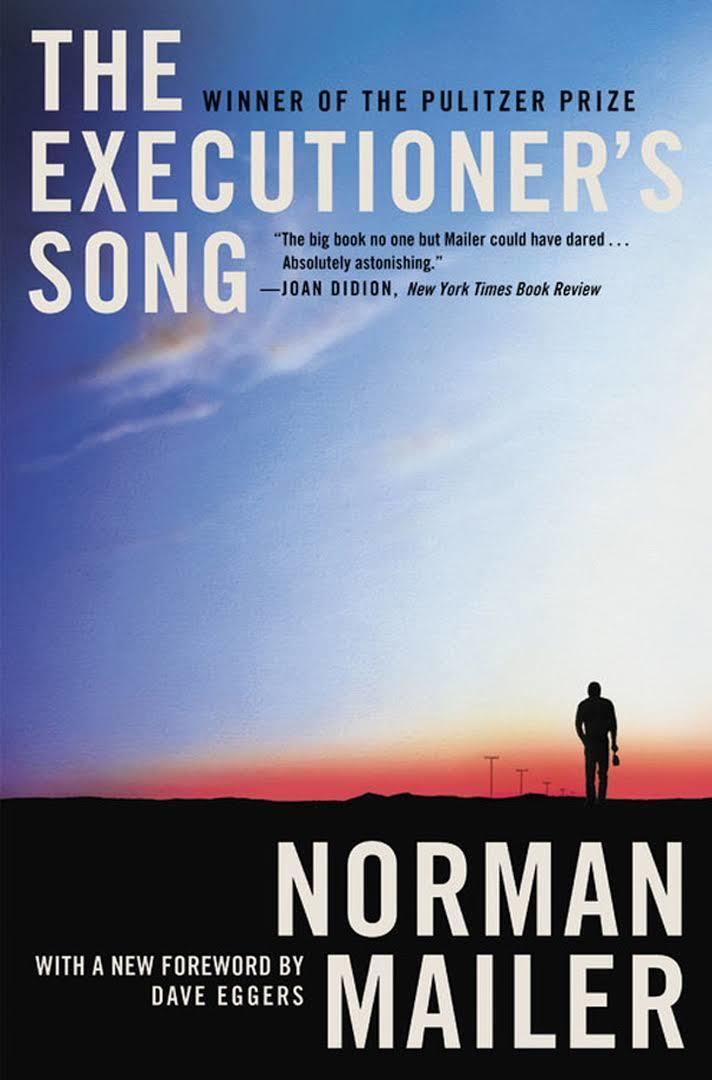8.2 /10 1 Votes
Country United States Publication date 1979 Publisher Little, Brown and Company | 4.1/5 Goodreads Language English Originally published 1979 | |||||||||||||||||||||||||||||||||
 | ||||||||||||||||||||||||||||||||||
Media type Print (hardback & paperback) Adaptations The Executioner's Song (1982) Similar Works by Norman Mailer, Creative nonfiction books, Pulitzer Prize for Fiction winners | ||||||||||||||||||||||||||||||||||
Great excerpts the executioner s song
The Executioner's Song (1979) is a Pulitzer Prize-winning novel by Norman Mailer that depicts the events related to the execution of Gary Gilmore for murder by the state of Utah. It was a finalist for the 1980 National Book Award. The title of the book may be a play on "The Lord High Executioner's Song" from Gilbert and Sullivan's The Mikado. "The Executioner's Song" is also the title of a poem by Mailer, published in Fuck You magazine in September 1964 and reprinted in Cannibals and Christians (1966).
Contents
- Great excerpts the executioner s song
- Background
- Summary
- Gilmores decision to die
- Film adaptation
- References
Notable for its portrayal of Gilmore and the anguish generated by the murders he committed, the book was central to the national debate over the revival of capital punishment by the Supreme Court. Gilmore was the first person to be executed in the United States since the re-instatement of the death penalty in 1976.
Background
In April 1976, Gilmore, age 35, was released from prison after serving 13 years for armed robbery in Indiana. He was flown to Utah to live with his cousin Brenda Nicol, who agreed to be his sponsor and tried to help him find work. Gilmore soon met and became romantically involved with Nicole Baker, a 19-year-old widow with two young children who was separated from her second husband. Despite his efforts to reform himself, Gilmore had a pattern of emotional volatility and self-destructive behavior, resulting in fighting, stealing, and using drugs. After Nicole broke up with Gilmore in July, he murdered two men in two separate robberies on succeeding days. Gilmore was turned in by Brenda Nicol.
He was convicted of murder at trial in September and sentenced to death. The execution was stayed on three occasions. Gilmore became a national media sensation after he fought to have his execution performed as soon as possible. He and Nicole agreed to a suicide pact that resulted in each of them suffering temporary comas in November. On January 17, 1977, after appeals filed by lawyers on behalf of the American Civil Liberties Union (in defiance of Gilmore's wishes) were rejected by the US Supreme Court, Gilmore was executed by the method he chose: firing squad. He was the first person to be judicially executed in the United States since Luis Monge was executed in the Colorado gas chamber on June 2, 1967.
Summary
Based almost entirely on interviews with the family and friends of both Gilmore and his victims, the book is exhaustive in its approach. Divided into three sections, the book focuses on the events leading up to the murders and the trial and execution of Gilmore, including full documentation of Gilmore's court appearances and his decision to demand his execution rather than to continue the appeals process.
The first section of the book deals with Gilmore's early life and his numerous detentions in juvenile crime facilities and, later, prison. It details his release some months prior to his first murder and the relationships he establishes during that time.
The second section focuses more extensively on Gilmore's trial, including his refusal to appeal his death sentence, his dealings with Lawrence Schiller and his attorneys' continued fight on his behalf.
Gilmore's decision to die
In interviews, Mailer discussed what motivated him to invest so much time interviewing everyone involved with Gary Gilmore. On one occasion, he said that Gilmore "appealed to me because he embodied many of the themes I've been living with all my lifelong." In another interview, he asserted that perhaps the most important theme of the book is that "we have profound choices to make in life, and one of them may be the deep and terrible choice most of us avoid between dying now and ‘saving one's soul'."
In his analysis of The Executioner's Song, critic Mark Edmundson said that
"from the point where Gilmore decides that he is willing to die, he takes on a certain dignity [...] Gilmore has developed something of a romantic faith. Gilmore's effort, from about the time he enters prison, is to conduct himself so that he can die what he would himself credit as a 'good death'."
Film adaptation
A screenplay was adapted from the book by its author, Norman Mailer. The 1982 television movie starred Tommy Lee Jones, a role for which he won an Emmy. Eli Wallach, Pat Corley, Christine Lahti and Rosanna Arquette also starred, with the film being directed by Lawrence Schiller. The character "Larry Samuels" in the film represented him.
